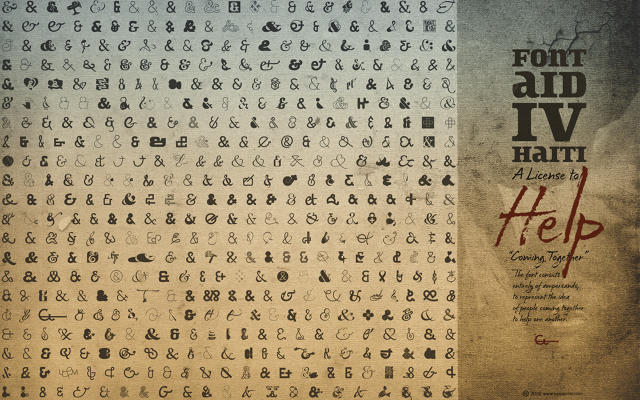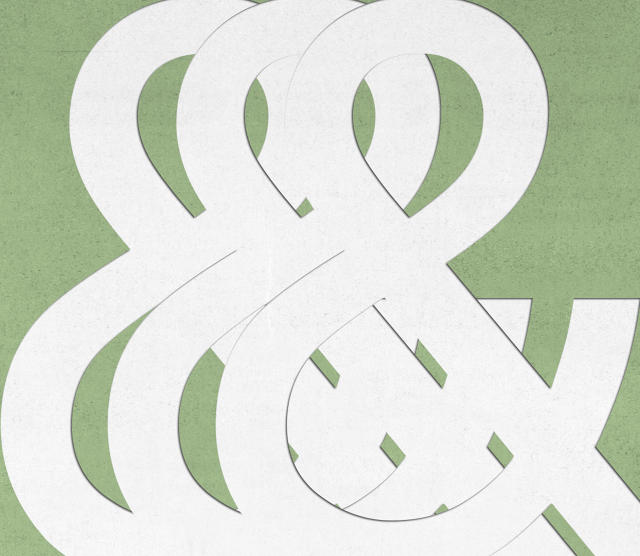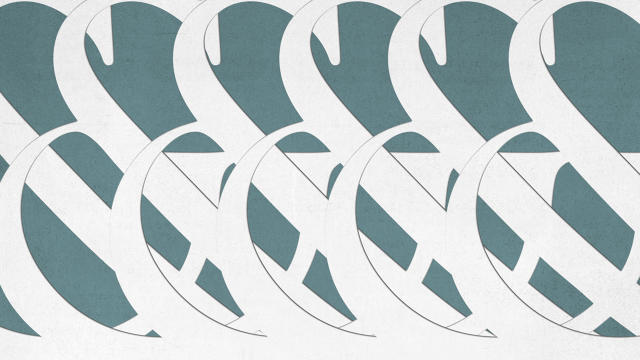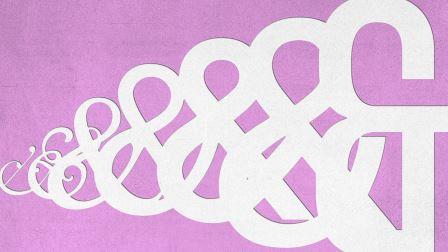Why Designers Love The Ampersand
A romance that dates back 7:00 AM
Cheerily nuzzled above the “7” key like a pear-shaped tablet bug, the ampersand is most likely probably the most intriguing persona on the keyboard. whereas all letters and punctuation marks seem to be an identical enough in abstract, the ampersand feels distinctive, like a form-shifter that would develop into at a second’s notice. For type designers and aficionados each, it’s not so much a character as it’s a personality, “regularly a tirelessly pleasing one, most likely an uncle with too many methods,” as Simon Garfield wrote in his 2012 ebook, just My kind.
No marvel the ampersand attracts such endless fascination. There are coloring books about ampersands, ampersand-a-day Tumblr blogs, and an entire cottage industry of t-shirt makers working in ampersands. in all probability essentially the most epic endeavor of ampersand-ian tribute got here in 2010, when over four hundred different designers came collectively to create a complete font made up of nothing but assorted and unrepeated ampersands. The project speaks to the ampersand’s individuality: a font of nothing but ampersands is straightforward to think about in a way that a font of most effective decrease case “j“s may by no means be.
but when an ampersand feels love it will also be anything, what makes an ampersand an ampersand? where does it come from? And why, precisely, do type designers adore it so much more than different characters?

every Ampersand begins With “Et”
Ampersand design could appear infinitely variable, but irrespective of how stylized or abstracted, each ampersand is, at heart, an et—or Latin for “and.” Some typefaces (especially handwritten-model ones) make this more obvious: it does not take an excessive amount of squinting to see an “et” within the ampersands of Trebuchet MS, Garamond Italic, Casalon Italic, and even Papyrus. but you will see that the Latin DNA of “et” even in an Arial, Helvetica, or instances New Roman ampersand, where the “e” has grow to be a half-closed determine eight, forming the go of a “t” with its bottom descender. And in case you’ve ever handwritten an ampersand, likelihood is you could have performed so by using drawing a loopy cursive “E,” bisected lengthwise via a straight line: some other stylized “et.”
the first recognized ampersand was scrawled on a wall in 1st-century Pompeii by using an nameless graffiti artist practising his Roman cursive. it’s associated, but now not identical to, a rival mark created during the same period of time via Marcus Tiro, a former slave of Cicero who proposed what’s often called the Tironian et (or “⁊”) as part of some of the world’s first shorthand system. even supposing the Tironian “et” sooner or later fell out of favor—except, bizarrely, in ireland, the place it’s still used in Gaelic signage lately—the Latin “et” persevered to realize popularity, in all probability as a result of it wasn’t tied to a bigger shorthand device that scribes needed to examine in full.
instead, by way of the eighth century, they had stylized the Latin “et” into a logo that appears very much like a up to date ampersand. however it will take another thousand years for the ampersand to get its brand new identify.

And Per Se &
Technically, the word ampersand is a mondegreen—meaning a jumble of words that’s mechanically misheard—constructed from the phrase “and per se &,” itself a meaningless phrase salad which handiest is sensible in historic context.
in the nineteenth century, the ampersand used to be identified as the 27th letter of the alphabet, right after “Z,” and taught as such to British schoolchildren. at the time, it was fashionable to consult with letters that could also be interpreted as phrases as per se letters: e.g. per se “A” (versus article “A”), and per se “I” (versus pronoun “I.”) since it stood for “and,” the ampersand was the 1/3 of those per se letters, so when college kids recited their ABCs, they ended it: “…W, X, Y, Z, and per se and.” Get a pair generations of kids slurring “and per se and,” and you get the phrase ampersand.
although it is not today, the truth that the ampersand was once once thought to be the twenty seventh letter could be why it looks so uniquely at home in the midst of other letters, as is the case with AT&T, H&M, A&W, and so on. actually, within the industry world, the ampersand has exotic standing. it is the typographical similar of a marriage ring, used to mark everlasting partnerships, like Marks & Spencer, Johnson & Johnson, Barnes & Noble, and Ben & Jerry’s.

Why designers love ampersands
even though his personal partnership by ampersand flared out, Jonathan Hoefler (now of Hoefler & Co.) still loves the character. speaking to Wired, Hoefler tried to sum up his love for the ampersand, which he says he’s been known to attract “to extra.” “it’s always a chance for adventure,” he says. “Even probably the most conservative typefaces can provide sanctuary to a whimsical ampersand or two.”
Hoefler’s no longer by myself in finding the ampersand adventurous. The persona’s capability to be “whimsical” even in otherwise staid fonts is one that is referred to as out by many kind designers as its distinctive high quality. “The ampersand is the one glyph where sort designers are able to let unfastened and be slightly more creative,” says Jeremiah Shoaf, a contract fashion designer and the editor of Typewolf, a well-liked weblog about typefaces which makes use of a Baskerville ampersand for its brand. that is as a result of ampersands are on a regular basis best used for show type—the large or crowd pleasing type utilized in headlines, signage, and ads—so the character can also be extra ornate, even in fonts that are basically designed for text. A excellent example of this impact in action are the ampersands of Kings Caslon, Bookmania, Didot Italic, and Cochin Italic, all of which in reality cut unfastened and be more flamboyant than their related typefaces.
however it’s consistent with the kitchen sink nature of ampersands that whereas some designers love them for their whimsy, others see simplest order. In an email, famed type fashion designer Erik Spiekermann suggests the rationale he loves ampersands is as a result of their shape appeals to the mathematical bent of his orderly German mind. “i love designing them because i admire designing figures, and the ampersand is like an 8 with bits added,” he says. in addition to the numerous ampersands he has designed for his widespread typefaces, Spiekermann has an odd way of drawing ampersands in his day-to-day correspondence, where the persona seems like a stylized @ image. He describes the fluidity of what people expect an ampersand to appear to be as affording designers plenty of probability to play around.

the great Dinosaur of kind
at the finish of the day, it can be extremely tough to succinctly outline the ampersand—which is, in fact, exactly what makes it so fascinating. it may be virtually anything you want it to be. however in an e-mail about his fascination with the ampersand, Tobias Frere-Jones (formerly wedded by using an ampersand in Hoefler & Frere-Jones, now of Frere Jones sort) comes closest. He writes:
in the history of our alphabet, the ampersand is a dinosaur.
It should have long past extinct a long time ago, however has survived nevertheless. We use it so incessantly that it’s straightforward to omit its foundation as two letters entangled, spelling out a word in Latin. The written kinds of Latin had scores of contractions and other marks for abbreviation. All of these marks died alongside the Latin language itself, excluding for the ampersand. (and far less prominently, the “Rx” image we now take to signify prescription drugs.)
Visually, the ampersand is a loner. thanks to its convoluted building, it has no spouse and children among any of the letters. And it has a strange temporary to fulfill, working on the identical scale as letters but never being improper for one. So the type dressmaker is left to wing it, right from the beginning. It’s tempting to suppose that the highest bowl will find steerage in the determine eight, or that the diagonals can cribbed off the k or X. It by no means works out that approach.
frequently, letters help to form one another, by using surroundings precedents and offering contexts. however the ampersand doesn’t receive any of that support. That makes it laborious to attract, as a result of so many different shapes might seem to be conceivable in the beginning. but it also opens an unusually huge window for experimentation and chance. It’s how the dressmaker can put on a fireworks show on this one shape, especially in seriffed italics.
in any case, the ampersand is a good looking and uncooperative creature, one we’re fortunate to have inherited.
If there is any way to summarize the ampersand, that will have to be it: the pretty and uncooperative dinosaur who lives on on your fonts. may just the ampersand by no means go extinct, and by no means be totally tamed.
quick company , read Full Story
(57)













